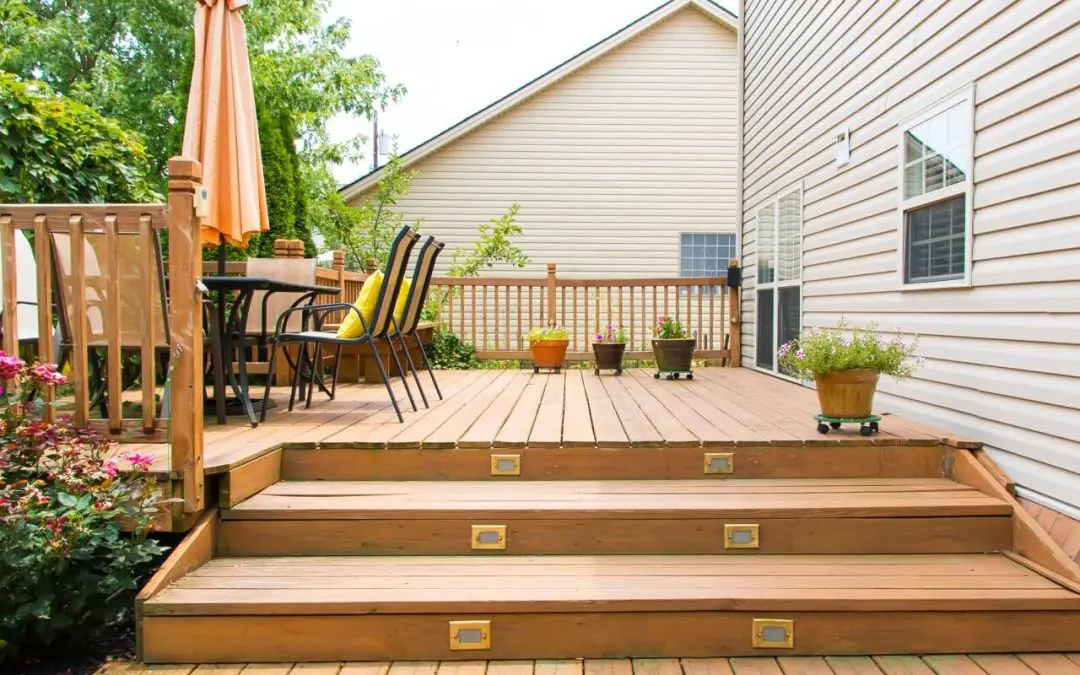Your deck is one of the most enjoyable features of your home, but without proper deck maintenance, it can quickly turn into one of the most neglected and expensive to repair. Consistent care helps you avoid costly damage, minimize safety hazards, and extend the life of your deck season after season. No matter the material—wood, composite, or otherwise—routine deck maintenance is essential to preserving its appearance, durability, and overall function.
Why Regular Deck Maintenance Matters
Deck maintenance plays a critical role in protecting your investment. Over time, exposure to sun, rain, snow, and fluctuating temperatures will damage your deck. Without routine care, you may notice loose boards, faded surfaces, splinters, or even signs of structural damage, which may pose serious safety hazards.
Regular maintenance helps prevent moisture from seeping in and causing rot or mold. It will keep your finishes looking fresh and extend the life of sealants, stains, and protective coatings.
Seasonal Tips for Effective Deck Maintenance
Spring is an ideal time to do a thorough inspection after winter has passed. Check for any damage caused by snow, ice, or freezing temperatures. Look for nails or screws that have come loose, cracked or warped boards, and signs of mildew or decay.
Summer is a great time to power wash your deck and apply a fresh stain or sealant. These steps help preserve the wood and protect it from harsh UV rays. Fall is all about cleaning and prepping the deck for colder months. Remove leaves, sweep debris between boards, and trim nearby bushes or trees that could cause moisture buildup. Staying proactive through the year keeps deck maintenance manageable and helps you avoid surprises.
Signs Your Deck Needs Immediate Attention
While general upkeep is important, there are times when deck maintenance becomes urgent. If your deck feels spongy or bouncy underfoot, you may have hidden rot or structural issues. Discolored spots can signal water damage, and a strong musty smell might point to mold. Railings that wobble or posts that shift are a safety hazard.
Don’t ignore these warning signs. Addressing them quickly will prevent more serious and expensive damage. If you’re unsure about the extent of the issue, consider bringing in a professional for a safety inspection.
Deck Maintenance for Different Materials
Decks aren’t one-size-fits-all, and the type of material you have will affect your maintenance strategy. Wood decks require more hands-on care, including annual sealing or staining. Composite decks are more resistant to moisture and fading, but still need cleaning to remove dirt, mold, and grime.
Vinyl and aluminum decks are low-maintenance but should be checked periodically for dents, scratches, or buildup that could compromise the finish. Consistent attention and proper cleaning techniques will keep your deck looking great and functioning well, regardless of the material.
Longevity Starts with Smart Deck Maintenance
One of the best parts of owning a home is customizing your outdoor space to reflect your lifestyle. Investing in a large wraparound deck or a cozy patio extension adds value to your home, and caring for that space ensures it stays safe, functional, and enjoyable for years to come. Deck maintenance is about creating a secure, durable, and welcoming environment for your family and guests.
With a consistent maintenance plan and seasonal checks, you will avoid unnecessary repairs and preserve your deck’s value. Don’t wait until something breaks or becomes a safety hazard. A little time and effort go a long way in protecting your home and giving you peace of mind.
FAQs
How often should I clean my deck?
Do a deep clean at least once a year. However, spring and fall are ideal for removing buildup and preventing future damage.
Do I need to seal my deck every year?
That depends on the type of wood and the sealant used. Most wood decks benefit from resealing every 1–3 years. Perform a water drop test to check: if water soaks in instead of beading up, it’s time to reseal.
Can I pressure wash my deck?
Yes, but do so carefully. Use a fan tip and low pressure to avoid damaging the surface. Once it’s dry, always follow up with proper sealing.
What’s the best way to prevent mold and mildew?
Keep your deck clear of debris, leaves, and moisture traps. Regular cleaning and sealing help prevent mold and mildew growth.
How do I know if my deck is safe?
Inspect for loose boards, rusted fasteners, unstable railings, loose nails, and any signs of rot or decay. If you’re unsure, schedule a professional inspection.
Buyer’s Edge offers home inspections to customers in Western North Carolina. Contact us to request our services.

